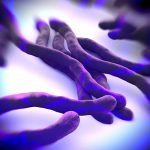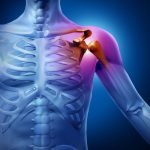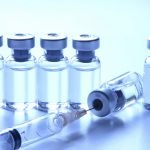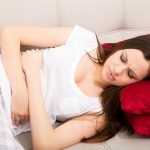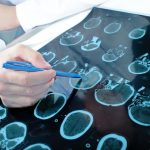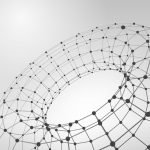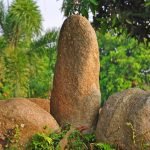Calming Atrial Fibrillation
Naturopathic Medicine for a Common Condition
Paul R. Saunders, PhD, ND
Atrial fibrillation (AF) is the most common arrhythmia. It occurs when a dysfunctional autonomic nervous system and sensitive heart tissue are triggered. There is a loss of synchronicity between the atria and the ventricles, with the former beating at 300 to 600 beats/min and the latter beating irregularly at 90 to 160 beats/min. The electrocardiographic P wave is replaced by irregular chaotic fibrillatory waves of ventricular tachycardia. Enhanced automaticity of the left atrium may extend 5 to 6 cm into the pulmonary vein. There is a shortening of the atrial refractory period, and the region of functional conduction block becomes divided and results in maintenance of the persistent chaotic state; thus, the phrase atrial fibrillation begets AF.
Background
Atrial fibrillation is divided into 4 types.1,2 The first type, paroxysmal AF, persists for less than 7 days, and the heart converts on its own to normal sinus rhythm. An adrenergic subtype is most common in seniors, occurs during the day, and is preceded by exercise or emotional stress; hyperthyroidism and pheochromocytoma must be ruled out. A vagal subtype is associated with an overactive parasympathetic system. It is seen in athletic individuals and in those with digestive issues. The typical patient is a 40- to 50-year-old man whose AF occurs at rest after exercise, eating, alcohol ingestion, or cocaine use. Investigations have demonstrated that changes occur in the autonomic nervous system approximately 5 to 15 minutes before the episodes begin. The second type, persistent AF, lasts 7 days or longer, and cardioversion effectively restores normal sinus rhythm. In the third type, permanent AF, the heart does not respond to cardioversion.
Underlying pathologic conditions in these 3 types of AF should be ruled out. These include the following: mitral valve prolapse or stenosis, rheumatic heart disease, coronary heart disease, angina, congenital heart disease, congestive heart failure with left ventricular dysfunction, myocarditis, atrial fibrosis, hypertension causing a narrowed aorta, diabetes mellitus, use of tobacco, and hypoglycemia.3,4
The fourth type, lone AF, lacks an underlying structural or cardiac cause or pathologic condition. The typical individual is younger than 60 years and has a low risk of thromboembolism. Approximately 30% of individuals with AF have lone AF.1,2 The incidence is expected to double in the next decades, and there is some evidence that it has already increased by 70% in the last 15 years as baby boomers grey.
The overall prevalence of AF is less than 0.1% among those younger than 55 years, 3.8% among those younger than 60 years, and greater than 10% among those 80 years or older.1,2 Among persons with AF, there is a 1:2 ratio of African North Americans to those of white race/ethnicity, and men with AF exceed women with AF in all age groups.
Because there is no simple single highly effective pharmaceutical or surgical intervention, treatment of this condition is often best addressed by naturopathic medical care. The approach to treating AF follows 2 simple, but at times challenging, naturopathic principles: (1) identify and treat the cause and (2) individualize therapy.
The underlying triggers or causes of AF have been divided into 4 categories. First, medical pathologic causes include heart disease, hyperthyroidism, and pheochromocytoma. For example, AF occurs after bypass surgery in more than 10% of patients and complicates patient recovery. Second, triggers of AF include binge drinking, substance abuse that exacerbates electrolyte balance and causes cardiac inflammation, and ingestion of tyramine-containing foods. Examples include meat and fish that are pickled, aged, smoked, fermented, marinated, or spoiled. Also included are most cheeses, sour cream, yogurt, shrimp paste, soy sauce, tofu, tempeh, sauerkraut and kimchi, fava and romano beans, avocado, banana, pineapple, peanuts, Brazil nuts, coconut, and most cacti. Third, AF can occur during or after exercise, suggesting that electrolyte imbalance from loss of fluids has a role in disturbing autonomic heart function. Atrial fibrillation also seems more common in individuals with a larger heart, a common adverse effect in endurance-trained athletes. Fourth, AF can be caused by physical stress or emotional stress (commonly grief, anger, or anxiety).
The major medical risk among patients with AF is stroke. This risk increases with age and with longer time that the patient is not in normal sinus rhythm. Compared with younger individuals, the risk increases in persons aged 50 to 59 years by 1.5% and in persons 75 years or older by 30% to 50%.5,6 There is some evidence of a 2-fold higher risk among patients who are not in normal sinus rhythm, while the annual risk in nonrheumatic AF is 5%, or 2 to 7 times that of patients without AF. Many advocate anticoagulant therapy if cardioversion does not occur within 24 hours. In patients younger than 60 years without risk factors, aspirin (acetylsalicylic acid) therapy is preferred; in patients aged 60 to 75 years without risk factors, acetylsalicylic acid or warfarin sodium is usually given; and in patients older than 75 years, warfarin is preferred.7,8 Potential interactions include Allium species, Ginkgo biloba, Salix species, and others as detailed in the fourth edition of Herbal Contraindications & Drug Interactions by Brinker.9
Allopathic Treatment
Cardioversion, an emergency department procedure, uses electrical shock to force the heart into normal sinus rhythm. Medications used with this procedure include dofetilide, ibutilide fumarate, and flecainide acetate.10 Flecainide leads to a quicker conversion when administered intravenously, but oral and intravenous outcomes were the same at 8 hours in a 2000 study.11 Dofetilide selectively blocks the rapid component of delayed rectifier outward potassium currents. Patients should have a normal creatinine clearance and should not use drugs or herbs that interfere with CYP450-3A4 and thus elevate serum levels of dofetilide.12 Ibutilide works by promoting the influx of sodium through slow channels. These medications require electrocardiographic monitoring during cardioversion.13 The success of cardioversion is 80% to 90% but often is not permanent if AF has continued 7 days or longer.
Placement of a pacemaker-defibrillator is an alternative for patients with persistent AF. However, the current range of 0.5 to 1.0 J is uncomfortable. It can cause ventricular fibrillation or tachycardia, the patient must avoid high-voltage fields, and driving is usually prohibited for 6 months after implantation.14,15
The preferred long-term therapy is catheter ablation of ectopic atrium sites. The procedure can take 2 to 4 hours and is 60% to 80% successful. Adverse effects include bleeding, infection, heart or blood vessel damage and scar tissue, clot formation, destruction of normal electrical pathways (which necessitates a pacemaker), and recurrence of AF.16,17 A review of 10 controlled trials and 76 case series involving 4858 patients demonstrated that catheter ablation was more effective in patients refractory to pharmaceutical therapy at 12 months, but adverse effects included cardiac tamponade, pulmonary vein stenosis, and AF recurrence.18 Catheter ablation also increases oxidative metabolites, which has been shown to be associated with increased serum level of C-reactive protein.19
Digitalis has long been a preferred drug or botanical for treatment of AF. In a large study20 of 7000 patients with a left ventricle ejection fraction of less than 45% who received an angiotensin-converting enzyme inhibitor and a diuretic plus digitalis (0.250 mg) or placebo, 35% had died in each group after 3 years. The authors concluded that digitalis significantly decreased heart failure and hospitalization but did not alter the risk of death from heart failure. In a study21 from the United Kingdom of 484 patients, mortality was 38.9% in a group receiving digitalis and 21.3% in a group receiving b-blockers and spironolactone. The authors, and others,22,23 have concluded that digitalis is detrimental and contraindicated in patients with chronic heart failure who are in sinus rhythm. If digitalis is selected for treatment, even short term, potassium levels may be depleted when it is taken concurrently with anthraquinone glycoside botanicals, such as Rhamhus and Aloe species, Glycyrrhiza glabra, and Glycyrrhiza uralensis.9
Naturopathic Treatment
An excellent open-minded review by Larsen24 classifies the triggers of AF as vagal (with 36% from fatigue), adrenergic (with 94% from stress and anxiety), and mixed (with 56% from stress and anxiety). He identified the triggers (in order of most to least important) as stress, alcohol, caffeine, exercise, fatigue, rest or rest after exercise, cold drinks, monosodium glutamate, chocolate, and bending over or lying on the left side. There is a clear role for mindful meditation and related interventions that reduce the effects of stressful triggers and type D personality and help the patient find an inner peace, even if temporarily. There is also a need for significant lifestyle changes that decrease exposure to known triggers that are unique to each patient. Clinical trials are lacking on AF and mindfulness, so our focus will be on nutrients and botanicals that have been shown to be effective.
Atrial fibrillation has been associated with increased C-reactive protein level, but this level does not predict the duration, time, or history of AF.25 The American Heart Association recommends consumption of omega-3 fish oil from fish (four 3-oz servings per week) or as oil (0.8-1.0 g/d) for primary and secondary prevention of heart disease.26 A study27 of AF in 102 patients after coronary artery bypass compared intake of fish oil (100 mg/kg/d) vs soy oil. The postoperative rate of AF was 17.3% among fish oil consumers vs 30.6% among soy oil consumers. The fish oil group had short intensive care stays and no other complications.
Magnesium supplementation has the following benefits: it increases the threshold for fibrillation, prolongs sinus node refractoriness and arteriovenous node conduction, minimizes adverse effects of neuroleptics and tricyclic antidepressants, benefits the function of class 3 antiarrhythmic medications for cardioversion, reduces postoperative arrhythmia, decreases extrasystoles, and is essential for patients with heart disease, diabetes mellitus, excess alcohol use, and loop diuretic use.28-30 Intravenous magnesium sulfate (2 g) was tested in 104 patients with AF after coronary bypass.31 It reduced the incidence of AF by almost two-thirds and significantly elevated serum levels of magnesium; the procedure was considered safe. Similar results were found in a second study32 among 100 patients after coronary bypass using a 3-day infusion of magnesium sulfate (2.47 g/d). In another study33 of 29 patients critically ill with new-onset AF, intravenous magnesium sulfate (0.037 g/kg bolus, followed by 0.025 g/kg/h) was compared with intravenous amiodarone (300 mg bolus, followed by 1200 mg per 24 hours). The mean conversion times were 2 hours with magnesium and 4 hours with amiodarone. About 90% of patients cardioverted, but 24% relapsed. In a final study,34 intravenous magnesium (4 g) or saline was administered in 18 patients undergoing catheter ablation. Before surgery, all had normal serum levels of magnesium, but 89% had low intracellular magnesium levels. Intravenous magnesium administration raised both values but had no significant effect on outcomes or magnesium levels at 6 hours after infusion.
Potassium is an important cardiac electrolyte; its allopathic use in AF is uncommon. Familial AF resulting from the Y1795C SCN5A mutation manifests as a long QT interval and AF in adults aged 20 to 35 years.35 Potassium supplementation can help these individuals. Clinically, large divided oral potassium doses (1000-1400 mg/d) can prevent AF in some patients. It is especially beneficial when given after exercise.
Three amino acids are important for the treatment of AF. First, a deficiency of carnitine has been found in patients with primary and secondary arrhythmia. Surgery can exacerbate this deficiency.36 In another study,37 intravenous carnitine (100 mg/kg) increased aortic blood flow, had an antiarrhythmic effect similar to that of quinidine (5 mg/kg), and was well tolerated. Second, taurine dampens the sympathetic nervous system and norepinephrine release, increases energy production, and regulates potassium, calcium, and sodium levels. Third, arginine is a nitric oxide precursor that helps restore sinus rhythm. Both taurine and arginine levels decrease with age. Taurine (10-20 g/d) reduced the incidence of AF by 50%, and arginine (4-5 g/d) helped reestablish sinus rhythm.38
Two overlooked essential nutrients are ascorbic acid and cobalamin. Men with the lowest ascorbic acid levels were at significantly highest risk of stroke, elevated blood pressure, and obesity.39 Among 170 patients randomized to placebo or to intravenous ascorbic acid (2 g) before bypass surgery and 500 mg twice daily for 5 days after surgery, the prevalence of AF was 44.7% in the vitamin C group vs 61.2% in the placebo group.40 A study41 of 2155 patients found that a serum level of vitamin B12 exceeding 313 pmol/L (424 pg/mL) and daily intake of vitamin B12 (0.5 mg) significantly reduced the risk of cardiac events by one-third. Hydroxocobalamin and methylcobalamin are the best forms for patients with AF.
Despite the lack of published trials, the importance of vitamin D is suggested by a case report.42 A 77-year-old woman with nonresponsive AF developed chronic fatigue and self-prescribed vitamin D3 (1000 IU/d). Six to 12 months later, she had normal sinus rhythm, no AF, and less fatigue, and she remained asymptomatic at a follow-up visit more than 2 years later.
Two important botanicals are Selenicereus grandiflorus and Convallaria majalis. The former is indicated for a violent or irregular heart rate in patients characterized by nervousness, anxiety, and apprehension; the latter is useful in patients with dropsy, mitral insufficiency, palpitations, and vehement heart action with normal or low arterial pressure.43 Selenicereus contains amine alkaloids and flavonoids, while Convallaria contains some 38 cardiac cardenolides and 8 flavonoids.44 To wean patients off digitalis, Weiss45 used these botanicals with Crataegus oxyacantha, an herb that he did not use long term in cardiac patients.
Summary
Patients with AF will benefit from control of physical, ingested, and psychological triggers. Good response can be obtained with the use of magnesium, potassium, ascorbic acid, cobalamin, carnitine, taurine, and arginine. A test of serum levels and a therapeutic trial of vitamin D can also be beneficial. Depending on symptoms, botanical support may include Selenicereus and Convallaria, along with the cardiac tonic Crataegus.
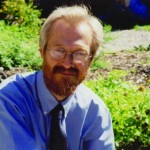 Paul Richard Saunders, PhD, ND, DHANP, CCH and Professor of Materia Medica, has a private practice in Dundas. His PhD, in plant ecology, is from Duke University. He was on the faculty at Clemson and Washington State Universities (WSU), earning tenure at WSU. He earned his ND from Ontario (now Canadian) College of Naturopathic Medicine, and did additional training and residency at National College of Naturopathic Medicine, Portland, Oregon, earned a second ND, and served as their interim Research Director. Paul earned a Diplomate from the Homeopathic Academy of Naturopathic Physicians (DHANP) and Certified Classical Homeopath (CCH) from the American Council on Homeopathic Certification in 1993. He completed chelation board examinations from the International College of Integrated Medicine in 1998. As Editor, The Canadian Journal of Herbalism, 2000-2002, he instituted peer-review. He does grant reviews for the NIH, NCCAM, 2000-present. He has been honored as Ontario Naturopathic Doctor of the Year in 1994 and 2002. In 1999, he was a member of the Transition Team that created the Office of Natural Health Products, Health Canada, served on its Expert Advisory Committee, 2000-2006, and serves on its Program Advisory sub-committee 2009-present. He has co-authored three books, conducted research, published numerous papers, and lectured frequently on naturopathic medicine.
Paul Richard Saunders, PhD, ND, DHANP, CCH and Professor of Materia Medica, has a private practice in Dundas. His PhD, in plant ecology, is from Duke University. He was on the faculty at Clemson and Washington State Universities (WSU), earning tenure at WSU. He earned his ND from Ontario (now Canadian) College of Naturopathic Medicine, and did additional training and residency at National College of Naturopathic Medicine, Portland, Oregon, earned a second ND, and served as their interim Research Director. Paul earned a Diplomate from the Homeopathic Academy of Naturopathic Physicians (DHANP) and Certified Classical Homeopath (CCH) from the American Council on Homeopathic Certification in 1993. He completed chelation board examinations from the International College of Integrated Medicine in 1998. As Editor, The Canadian Journal of Herbalism, 2000-2002, he instituted peer-review. He does grant reviews for the NIH, NCCAM, 2000-present. He has been honored as Ontario Naturopathic Doctor of the Year in 1994 and 2002. In 1999, he was a member of the Transition Team that created the Office of Natural Health Products, Health Canada, served on its Expert Advisory Committee, 2000-2006, and serves on its Program Advisory sub-committee 2009-present. He has co-authored three books, conducted research, published numerous papers, and lectured frequently on naturopathic medicine.
References
1. Gillis AM, Connolly SJ, Dubuc M, et al; PA3 Investigators: Atrial Pacing Peri-ablation for Prevention of Atrial Fibrillation Trial. Circadian variation of paroxysmal atrial fibrillation. Am J Cardiol. 2001;87(6):794-798, A8.
2. Coumel P. Paroxysmal atrial fibrillation: a disorder of autonomic tone? Eur Heart J. 1994;15(suppl A):9-16.
3. Pandanilan BJ, Prystowsky EN, Waldo AL. 2011. Atrial fibrillation, atrial flutter, and atrial tachycardia. Fuster V, Alexander RW, O’Rourke RA, eds. Hurst’s The Heart. New York, NY: McGraw-Hill Professional Publishing; 2001:825-826.
4. Conen D, Tedrow UB, Koplan BA, Glynn RJ, Buring JE, Albert CM. Influence of systolic and diastolic blood pressure on the risk of incident atrial fibrillation in women. Circulation. 2009;119(16):2146-2152.
5. Fuster V, Rydén LE, Asinger RW, et al; American College of Cardiology/American Heart Association/European Society of Cardiology Board. ACC/AHA/ESC guidelines for the management of patients with atrial fibrillation: executive summary: a report of the American College of Cardiology/American Heart Association Task Force on Practice Guidelines and the European Society of Cardiology Committee for Practice Guidelines and Policy Conferences (Committee to Develop Guidelines for the Management of Patients With Atrial Fibrillation): developed in collaboration with the North American Society of Pacing and Electrophysiology. J Am Coll Cardiol. 2001;38(4):1231-1266.
6. Echahidi N, Pibarot P, O’Hara G, Mathieu P. Mechanisms, prevention, and treatment of atrial fibrillation after cardiac surgery. J Am Coll Cardiol. 2008;51(8):793-801.
7. Am Fam Physician. 1998. Dell Orfano JT, Jerry CL, Wolbrette DL, Drugs for conversion of AF. www.aapf.org. Accessed July 24, 2011.
8. Singh M, Adigopula S, Patel P, Kiran K, Khosla S. Recent advances in oral anticoagulation for atrial fibrillation. Ther Adv Cardiovasc Dis. 2010;4(6):395-407.
9. Brinker F. Herbal Contraindications & Drug Interactions Plus Herbal Adjuncts With Medicines. 4th ed. Sandy, OR: Eclectic Medical Publications; 2010:161-166, 170-182, 225-230, 335-336.
10. Miller MR, McNamara RL, Segal JB, et al. Efficacy of agents for pharmacologic conversion of atrial fibrillation and subsequent maintenance of sinus rhythm: a meta-analysis of clinical trials. J Fam Pract. 2000;49(11):1033-1046.
11. Alp NJ, Bell JA, Shahi M. Randomised double blind trial of oral versus intravenous flecainide for the cardioversion of acute atrial fibrillation [published correction appears in Heart. 2000;84(3):331]. Heart. 2000;84(1):37-40.
12. Roukoz H, Saliba W. Dofetilide: a new class III antiarrhythmic agent. Expert Rev Cardiovasc Ther. 2007;5(1):9-19.
13. Rogers KC, Wolfe DA. Ibutilide: a class III rapidly acting antidysrhythmic for atrial fibrillation or atrial flutter. J Emerg Med. 2001;20(1):67-71.
14. Friedman PA, Hill MR, Hammill SC, Hayes DL, Stanton MS. Randomized prospective pilot study of long-term dual-site atrial pacing for prevention of atrial fibrillation. Mayo Clin Proc. 1998;73(9):848-854.
15. Cooper JM, Katcher MS, Orlov MV. Implantable devices for the treatment of atrial fibrillation. N Engl J Med. 2002;346(26):2062-2068.
16. Oral H, Knight BP, Ozaydin M, et al. Clinical significance of early recurrences of atrial fibrillation after pulmonary vein isolation. J Am Coll Cardiol. 2002;40(1):100-104.
17. Pandanilan BJ, Prystowsky EN, Waldo AL. 2011. Atrial fibrillation, atrial flutter, and atrial tachycardia. Fuster V, Alexander RW, O’Rourke RA, eds. IN Fuster W, Walsh RW, Harrington RW. McGraw Hill, NYC, NY. 13th Ed. 2011. Hurst’s The Heart. New York, NY: McGraw-Hill Professional Publishing; 2001:929.
18. Rodgers M, McKenna C, Palmer S, et al. Curative catheter ablation in atrial fibrillation and typical atrial flutter: systematic review and economic evaluation. Health Technol Assess. 2008;12(34): iii-iv, xi-xiii, 1-198.
19. Shimano M, Shibata R, Inden Y, et al. Reactive oxidative metabolites are associated with atrial conduction disturbance in patients with atrial fibrillation. Heart Rhythm. 2009;6(7):935-940.
20. Digitalis Investigation Group. The effect of digoxin on mortality and morbidity in patients with heart failure. N Engl J Med. 1997;336(8):525-533.
21. Lindsay SJ, Kearney MT, Prescott RJ, Fox KA, Nolan J. Digoxin and mortality in chronic heart failure: UK Heart Investigation. Lancet. 1999;354(9183):1003-1009.
22. Warren JL, McBean AM, Hass SL, Babish JD. Hospitalizations with adverse events caused by digitalis therapy among elderly Medicare beneficiaries. Arch Intern Med. 1994;154(13):1482-1487.
23. Sticherling C, Oral H, Horrocks J, et al. Effects of digoxin on acute, atrial fibrillation-induced changes in atrial refractoriness. Circulation. 2000;102(20):2503-2508.
24. Larsen HR. 2003. Lone atrial fibrillation: towards a cure. International Health News, Victoria, BC.
25. Yao SY, Chu JM, Chen KP, et al. Inflammation in lone atrial fibrillation. Clin Cardiol. 2009;32(2):94-98.
26. Anand RG, Alkadri M, Lavie CJ, Milani RV. The role of fish oil in arrhythmia prevention. J Cardiopulm Rehabil Prev. 2008;28(2):92-98.
27. Heidt MC, Vician M, Stracke SK, et al. Beneficial effects of intravenously administered N-3 fatty acids for the prevention of atrial fibrillation after coronary artery bypass surgery: a prospective randomized study. Thorac Cardiovasc Surg. 2009;57(5):276-280.
28. Europace Proceedings. 2009. Early and comprehensive management of atrial fibrillation. P Kirchhof et al. 11(7):860-865.
29. Ho KM. Intravenous magnesium for cardiac arrhythmias: jack of all trades. Magnes Res. 2008;21(1):65-68.
30. Sheybani A, Geraci SA. When should serum magnesium be measured prior to non-cardiac surgery? J Miss State Med Assoc. 2008;49(10):295-298.
31. Hamid M, Kamal RS, Sami SA, et al. Effect of single dose magnesium on arrhythmias in patients undergoing coronary artery bypass surgery. J Pak Med Assoc. 2008;58(1):22-27.
32. Kohno H, Koyanagi T, Kasegawa H, Miyazaki M. Three-day magnesium administration prevents atrial fibrillation after coronary artery bypass grafting. Ann Thorac Surg. 2005;79(1):117-126.
33. Sleeswijk ME, Tulleken JE, Van Noord T, Meertens JH, Ligtenberg JJ, Zijlstra JG. Efficacy of magnesium-amiodarone step-up scheme in critically ill patients with new-onset atrial fibrillation: a prospective observational study. J Intensive Care Med. 2008;23(1):61-66.
34. Shah SA, Clyne CA, Henyan N, et al. Impact of magnesium sulfate on serum magnesium concentrations and intracellular electrolyte concentrations among patients undergoing radio frequency catheter ablation. Conn Med. 2008;72(5):261-265.
35. Benito B, Brugada R, Perich RM, et al. A mutation in the sodium channel is responsible for the association of long QT syndrome and familial atrial fibrillation. Heart Rhythm. 2008;5(10):1434-1440.
36. Gilbert-Barness E, Barness LA. Pathogenesis of cardiac conduction disorders in children genetic and histopathologic aspects. Am J Med Genet A. 2006;140(19):1993-2006.
37. DiPalma JR, Ritchie DM, McMichael RF. Cardiovascular and antiarrhythmic effects of carnitine. Arch Int Pharmacodyn Ther. 1975;217(2):246-250.
38. Eby G, Halcomb WW. Elimination of cardiac arrhythmias using oral taurine with l-arginine with case histories: hypothesis for nitric oxide stabilization of the sinus node. Med Hypotheses. 2006;67(5):1200-1204.
39. Kurl S, Tuomainen TP, Laukkanen JA, et al. Plasma vitamin C modifies the association between hypertension and risk of stroke. Stroke. 2002;33(6):1568-1573.
40. Papoulidis P, Ananiadou O, Chalvatzoulis E, et al. The role of ascorbic acid in the prevention of atrial fibrillation after elective on-pump myocardial revascularization surgery: a single-center experience: a pilot study. Interact Cardiovasc Thorac Surg. 2011;12(2):121-124.
41. Spence JD. Perspective on the efficacy analysis of the Vitamin Intervention for Stroke Prevention trial. Clin Chem Lab Med. 2007;45(12):1582-1585.
42. Kessel L. Sick sinus syndrome cured by … vitamin D? Geriatrics. 1990;45(8):83-85.
43. King J, Felter HW, Lloyd JU. King’s American Dispensatory. Cincinnati: Ohio Valley Co; 1898. Reprinted Portland, OR: Eclectic Medical Publications; 1983:374-376, 596-599, 1613.
44. Godfrey A, Gowan M. Principles and Practices of Naturopathic Botanical Medicine. CCNM Press; 2010:92-94, 94-97, 120-122.
45. Weiss RF. Herbal Medicine. Beaconsfield, England: Beaconsfield Publishers; 1988:126-140, 145-147, 162-168.




